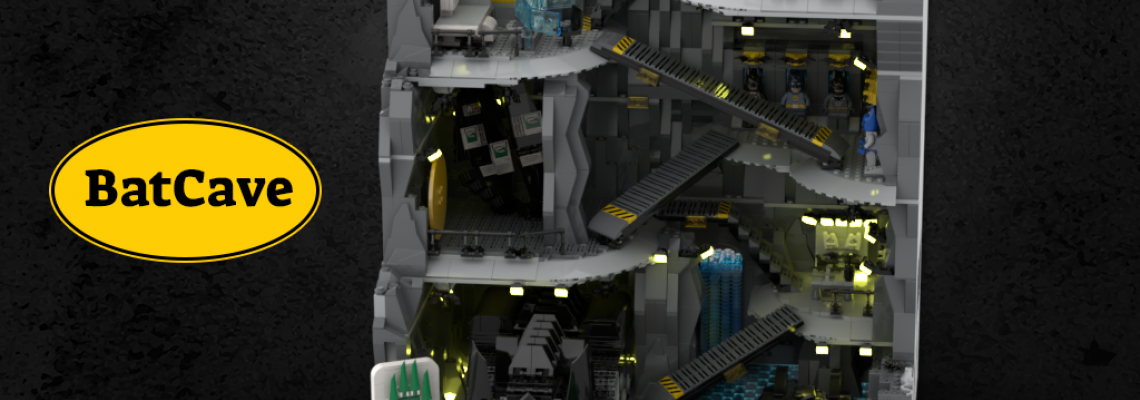Custom Lego Batman Cave From the Skecth to a model of 4434 parts

Custom Lego Batman Cave From the Skecth to a model of 4434 parts
Every client that comes to me wants a unique Lego model that isn't found anywhere else, according to his specifications and specs.
I always get a thrill from taking a model from the planning stage to the finished product, which includes a list of parts and instructions that the client can use to assemble the model at home as if it had just been sent from the Lego factory.
In this instance, a client also approached me with a unique request: a massive Lego Batman cave.
The first thing I do when I receive a request like this is to set expectations so that I may speak with the buyer about the crucial details that will enable me to comprehend his thoughts:
1) Model dimensions
2) Specific components he wants for the model
3) Has he come across other models on the internet who might serve as an inspiration for his goals?
4) Illustrations or sketches of his thoughts.
5) And anything else that will enable me to enter his thoughts and comprehend the model he visualizes.
In our instance, the client requested a model with five rooms plus space for BatTank and BatMobile. The rooms he asked for included a forensics room, a weapons room, a computer room, a costume room, a clinic, and a room for weaponry.
In addition to the chambers, he needed a giant coin, a giant Joker card, and a dinosaur model.
He specified that it should be the size of a minifigure.
This results from my understanding of the customer's desired specs (the tank is an older type I manufactured for the same customer).
After viewing the sketch, the customer began providing me with modifications and recommendations for the shape he wanted the base to have. He requested that the model not appear square and that the front base be slightly more curved.
Therefore, I made sure that the entire front-end point satisfied his criteria.
I began working on the model's overall design at the same time, and this is what I produced:
As you can see, the model is already beginning to take shape, and I will proceed quickly and alone.
The next step in a design like this is to draw the model's basic lines (height, width, and length), which gives me a general idea of how the entire design will be arranged. Of course, I consider all the elements the client initially requested (such as five rooms, etc.) and imagine where everything will fit.
The next step is to fill in all the model gaps, which allows us to proceed to the more enjoyable interior design phase.
Building the frame is challenging and exhausting, but it is necessary to get a remarkable outcome.
After I finish the frame, it's time for interior design, which is the most enjoyable part of creating a Lego model. At this point, it's critical to consider every little detail, and I'll give you a tip: the more relevant information you can add to your scene, the more detailed the model will be, greatly enhancing the finished product.
Additionally, try to incorporate a wide range of components that will give the model a variety of intriguing geometries.
That's how I constructed the Batman cave model.
To create unique models at a high level while considering my clients' requests, I meticulously work on every model I build, from the design and sketching stage to the last detail.